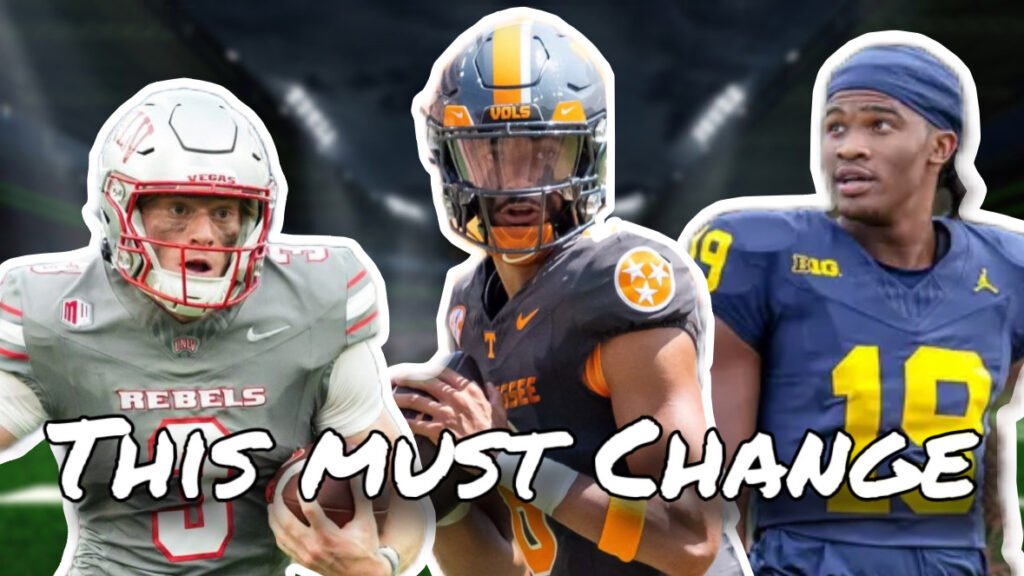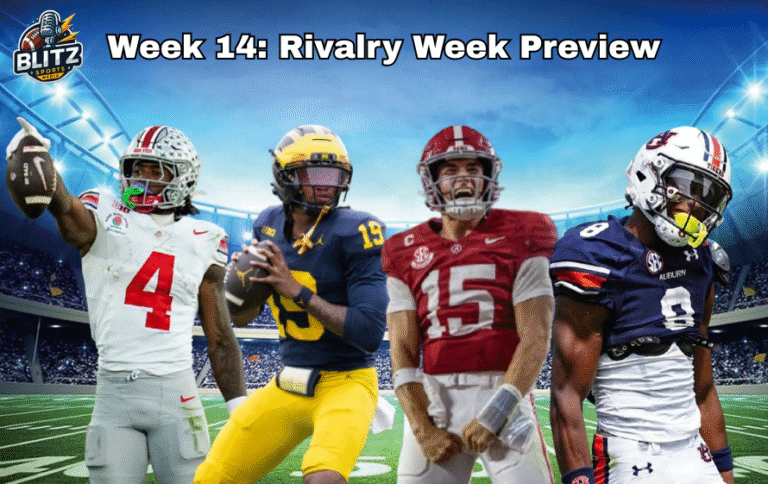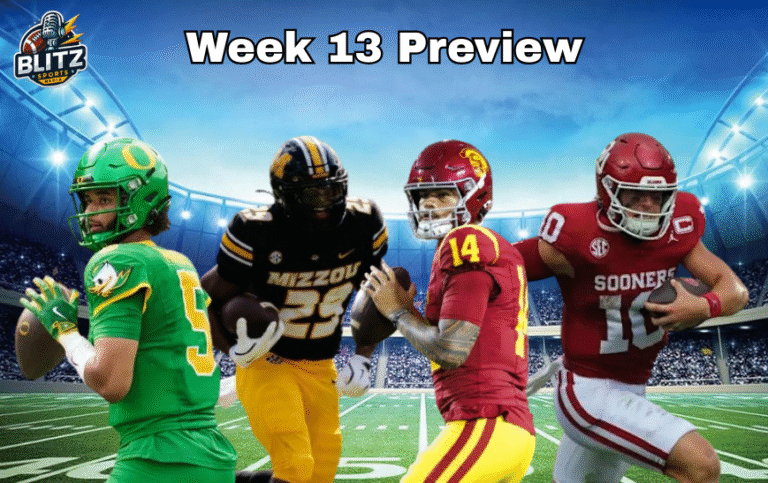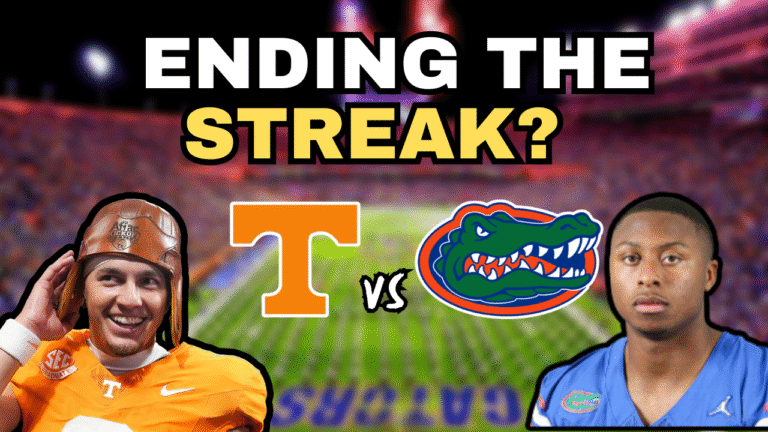
Since July 1, 2021, student-athletes have now been able to legally profit off their name, image, and likeness. This ruling ended the days of Heisman trophy winners Reggie Bush and Johnny Manziel getting sanctioned for signing autographs, or Ohio State having wins vacated for players receiving free tattoos. It was a ruling long overdue, as players could finally be compensated for the millions of dollars they were bringing in for their schools.
The following month, under new regulations, players who were looking to transfer could now enter their names into the transfer portal. This made it easier for players to be contacted by coaches when they were looking to transfer. Now they also could do so without losing a year of eligibility when changing schools.
While both these changes were great for student-athletes, they went into place without much regulation, and now college sports are really starting to feel the effects of that. There are players transferring to a new school every year, if not multiple times a year. Schools with the most money are now able to give players as much money as they want, leaving the less fortunate schools behind, creating an uneven playing field.
Just about every party involved is upset about how the transfer portal and NIL have turned into the wild west when it comes to the laws and regulations surrounding it. Coaches now have to re-recruit their entire roster to make sure they stick around. universities either are unhappy with how much money it costs to build a competitive roster, or are just outright refusing to foot the bill. Fans do not like the lack of loyalty from players and how many aspects of what made college sports unique are going away.
Players should not be at fault for trying to make money to better them and their families, but it is starting to get to the point where these players care more about going in the transfer portal every year to get the most money possible, rather than waiting around to develop and be on a winning team. Not to mention the number of players who have already completed their four years, but apply for waivers because they played Juco and think they should get more earning opportunities at the D1 level.
Something must change in terms of the transfer portal and NIL before things get even more amount of control. On top of all the conference realignment, resulting in leagues like the Pac-12 and Mountain West on the verge of extinction, college football is very quickly turning into all about making the most money possible rather than what is best for the players, programs, and fans. Here are five changes regarding the transfer portal and NIL that could get things back under control and keep college football from becoming just like pro sports, and saving the things that make it special.
1. Bring Back the Grace Period Between Transfers
Up until 2024, when the court stated this rule violated antitrust laws, athletes were required to sit out a year when transferring between FBS institutions. For example, look at the college career path of Cam Newton. After being at Florida for his Freshman and Sophomore years, but then transferred to Blinn Jr College before heading to Auburn. He did this so he would not have had to sit out a year like he would have had he gone straight from Florida to Auburn. Baker Mayfield, on the other hand, did not go this route, which is why he had to sit out a year when he transferred from Texas Tech to Oklahoma.
Now, I do not think this rule should come back with the same restrictions as it originally had, but I think some sort of variation would discourage players from playing for four teams in four years. Every student-athlete would be allowed one free trip to the transfer portal, any additional transfers would require the player to sit out a year if they transferred to another FBS school. The only exception would be for grad transfers or if the head coach left.
This would allow players to still be able to enter the transfer portal if their situation was not what they originally thought it was going to be, or to follow the coach who recruited them to their next school. However, I think it would decrease the number of players transferring just to get more money, as the earning potential of a player who was willingly sitting out or transferring down a level would be less.
2. Have an Eligibility Clock
While the occasional 25 or 26-year-old playing college football had happened in the past, post-pandemic, it has become a lot more frequent thing. Once every player received an extra COVID year of eligibility, players were eligible to play for five seasons. Those players should have finally been done playing college football last season or the year before, but because of the number of waivers the NCAA is giving out, we are seeing guys playing their sixth, seventh, or even higher-number seasons of college football.
While online doing research for this article, it says players have five years to play four seasons, but clearly that is not the case. With Junior College not counting towards the total number of seasons anymore, as well as medical redshirts, many players are playing seven or more years. To put it in perspective, a player who is a Freshman would have been in 7th grade when a seventh-year senior started playing college football.
I think all divisions taking on Division III would be the best way to solve this eligibility crisis. Division III gives student-athletes 10 semesters to finish their athletic career. So, any semester you are enrolled in school determines your eligibility rather than if you played that year. This would ensure players are done after five years of school, rather than being able to get around the rules and play more than that, like in the current system.
In regards to redshirts, I would have football take on the basketball rule, where if you play at all, you cannot redshirt, as opposed to the current four-game rule. This would stop a Mathew Sluka situation where he played to start the season but then redshirted and left the team to enter the transfer portal. And while injuries, especially season-ending ones, are unavoidable, I think the number of medical redshirts should be limited to one time per athlete. This means the max amount of years a player would be eligible would be six seasons, if they played four and had two redshirt seasons, one normal and one medical.
3. Have Only One Transfer Window Per Offseason
Imagine if in any other sport free agency opened twice a year for every player. For example say LeBron James after signing with the Heat could have decided before the season to change his mind and go back to Cleveland or chosen another team without ever playing a single game for the Heat. As insane and unrealistic as that sounds, that is how the offseason currently works in college football.
Players can enter the winter transfer portal, which opens before the season even ends, and then re-enter the transfer portal in the spring transfer portal window, which is exactly what Tanner Koziol did. The Ball State Tight End entered the transfer portal in the winter and committed to Wisconsin, but now is in the transfer portal again without ever playing for the Badgers.
It would be nice if that one window could come in the spring to avoid a Beau Pribula situation, where Pribula was forced to leave Penn State with their season and quest for a national championship still on going, for Missouri, to guarantee he would not lose his starting role with the Tigers next season. Understandably, both players and coaches would want to transfer at the semester so they can be a part of spring practice with their new school, but it puts everyone involved in a tough scenario that is not fair to either party.
Now, players transferring at semester can still be a thing, but I do not believe the portal must open at this time. If a player is still looking to transfer at the semester, it should be their own decision rather than having coaches from other schools trying to lure them away with more money, which is the problem that is now a mainstay with the transfer portal. It then makes choosing to leave their previous team to seek a new opportunity on their something completely on the player, which they will most likely be less likely to do.
4. Introduce Transfer Fees
The transfer portal has essentially turned a group of five and mid-major schools into a minor league system for power conference schools. Rather than wasting roster spots to develop underclassmen players, they will go and recruit the player via the transfer portal after they have developed at a lower-level school. Since these lower-level schools do not have the same NIL budgets the power conference schools have, they cannot afford to keep these players.
In soccer, when a player transfers from one club to another while still under contract, the new club is required to pay a transfer fee to the player’s previous club. That transfer fee is then usually used to acquire new players to help replace the player leaving. If something like this were added to the college football transfer portal, it would make it easier for smaller programs to keep players on their roster by giving the transfer fee money they receive from players leaving to players currently on the roster.
On top of making it easier for smaller schools being able to keep players, a transfer fee could also reduce the number of players in the transfer portal who transfer to a rival school. Many conferences and coaches used to have rules against players transferring within the conference, but with the transfer portal, those rules are now out the window. However, if schools now had to pay a transfer fee to another school in their conference, they might be less likely to recruit players from their rival schools.
Transfer fees could also be used as a recruiting strategy by schools. Schools could make the player be the one in charge of paying their transfer fee to their previous school by dipping into the players’ NIL earnings to pay the previous school. Players who are transferring so they can get more money in the transfer portal might now be dissuaded from leaving their current school because their earnings are fee-free as opposed to having to pay a fee on their earnings at the new school.
5. Abolish NIL Collectives
Now abolish is a harsh word, but the entire Nico Iamaleava situation at Tennessee could have been avoided if NIL collectives did not exist. The point of NIL was for players to profit off their name, image, and likeness, not paid for their performance on the field, like it has turned into. It was supposed to be that players could get paid for being in the college football video game or receive money for their jersey being sold in the team store, rather than the school just taking in that money, like they had in the past.
Now, play on the field was always going to determine who made the most money. The top athletes were always going to make more because they were the marketable and recognizable faces that would get them a shoe deal or have brands want them in advertisements. But it was not supposed to be the pay-for-play from rich boosters that it has turned into.
If Iamaleava wanted more money, then it should have been on him and the people representing him to find those opportunities to be a brand ambassador or be in advertisements, not just going to the boosters saying that he deserved more money because of how he played, regardless of if his play was worth more money. Props to Tennessee for not caving in to Nico’s request, as it would have set a horrible precedent that players could just go and ask for more money whenever they want.
Collectives are also an issue on the high school recruiting front. Look at the Bryce Underwood situation, for example. Underwood, the number one recruit in this year’s class, committed to LSU in January 2024. Then, in October of last year, Barstool Sports founder Dave Portnoy and Oracle founder Larry Ellison, both of whom are Michigan fans, gave Underwood an NIL offer. He could not resist flipping Underwood to stay in state and become a Wolverine.
These schools that do not have rich boosters and collectives that can just throw money at recruits because they want their football team to have a great roster cannot compete with this. It has turned NIL into pay for play which is turning college sports into pro sports. Yes, college football has always been a minor league system for the NFL, but the next step in the way college football is becoming pay-for-play would make contracts necessary for players.
Contracts could potentially make players viewed as employees of the schools, and require them to provide health benefits to the players. This is a cost that some of these smaller schools will not be able to afford and could result in them having to shut down their football program, or reduce the number of non-revenue-generating sports sponsored, even at bigger schools. Rather than seeing athletes lose opportunities to compete at the collegiate level, the better solution for the schools and student-athletes is to make them in charge of finding their own NIL opportunities rather than having and relying on collectives to foot the bill.




